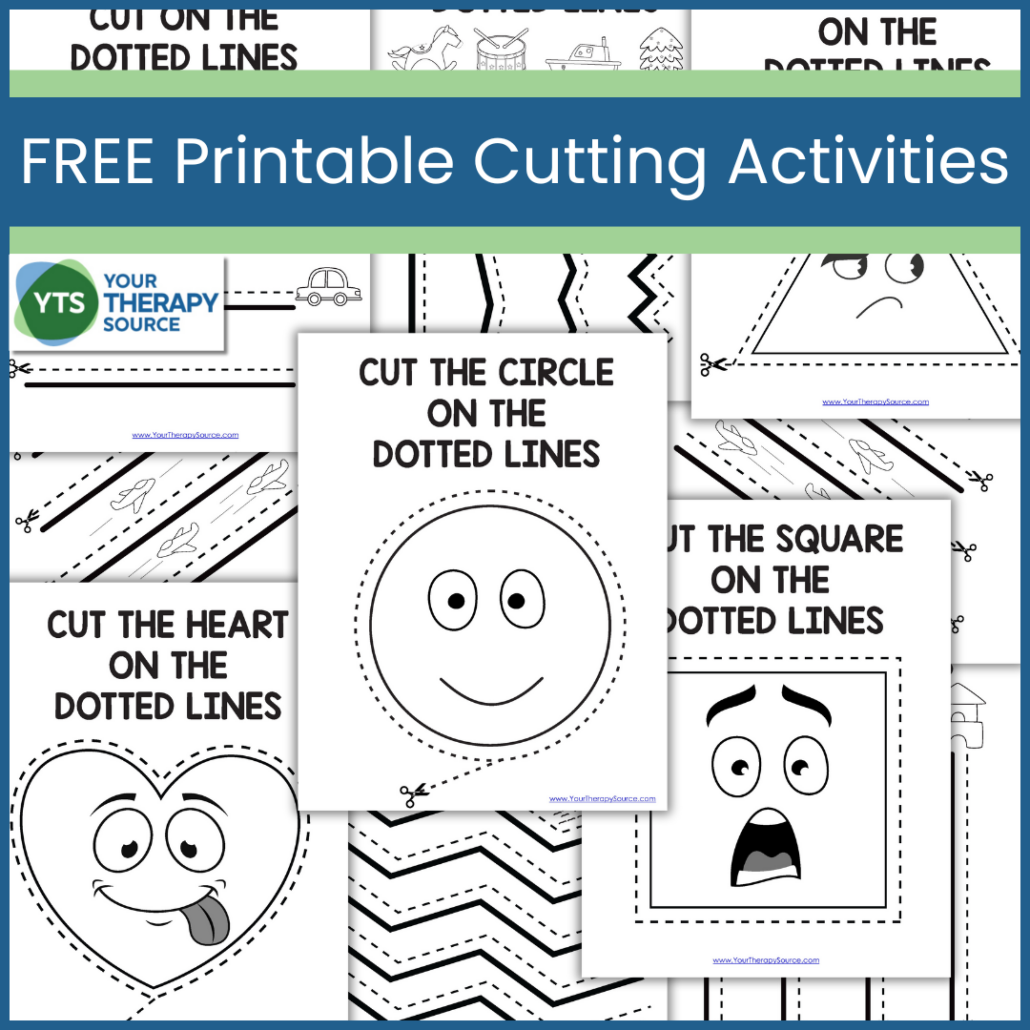Free Printable Cutting Activities Packet
Developing cutting skills is an essential part of early childhood education. These skills not only help young children with their hand-eye coordination but also play a significant role in their overall cognitive development. One of the most effective ways to help young learners practice these skills is through practice. Here is a 10-page PDF packet that includes scissor skills practice for various lines and shapes. Whether you are an occupational therapist, teacher, or parent, these free printable cutting activities are a great resource for developing fine motor control in children.
You can download the free cutting practice worksheets at the bottom of the post.
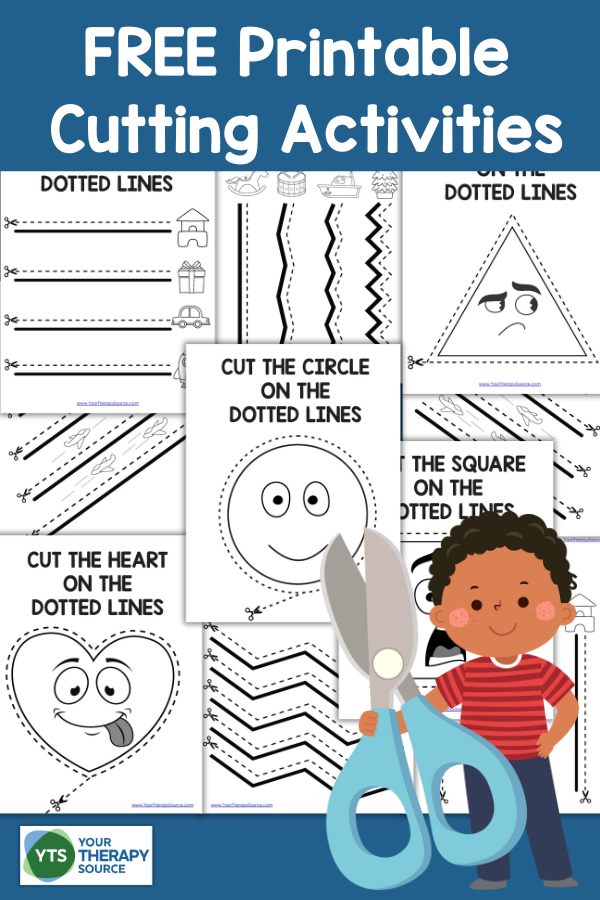
What’s Inside the Free Printable Cutting Activities Packet?
The free printable cutting activities packet is a comprehensive resource designed to help children develop precise cuts using scissors. The packet includes 10 practice pages that feature a variety of cutting challenges with different types of lines, ensuring that children can gradually improve their scissor skills. Here’s what you’ll find inside:
- Straight Lines: The packet begins with basic straight lines, both horizontal and vertical. These are a great way for children to start developing their cutting skills with simple, easy-to-follow paths.
- Wavy Lines: After mastering straight lines, children can move on to wavy lines. This introduces a new challenge that requires more precise cuts and enhances fine motor control.
- Mixed Lines: For a bit more variety, mixed lines combine straight, zig zag and wavy paths on the same page, encouraging young students to adapt their cutting technique.
- Shapes: The packet also includes cutting practice for different shapes such as circles, squares, triangles, and hearts. These shapes provide a fun way for children to practice cutting along curves and angles, further developing their skills.
Each page in this free printable cutting activities packet features black-and-white designs, making it economical to print. The directions are simple: children are instructed to cut along the dotted lines, helping them focus on making precise cuts while following a clear guide.
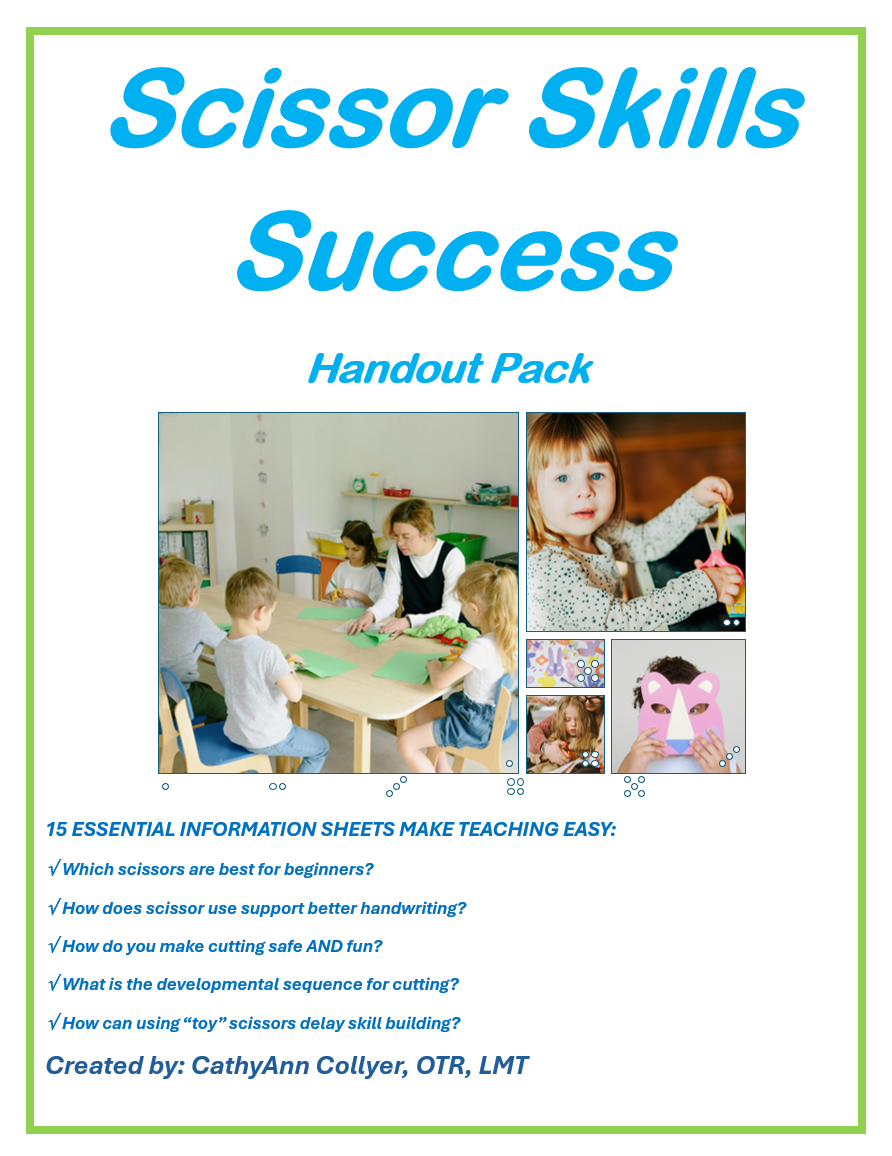
Scissor Skills Success Handout Pack
Why Free Printable Cutting Activities are Important for Fine Motor Development
Cutting with scissors is more than just an enjoyable activity for children; it’s a critical fine motor skill that supports their overall development. Free printable cutting activities like the ones in this packet provide numerous benefits:
- Fine Motor Skills: Cutting practice helps children develop the small muscles in their hands, essential for tasks like writing, buttoning clothes, and other daily activities.
- Hand-Eye Coordination: As children cut along the lines, they improve their eye-hand coordination, an important life skill for tasks that require precision.
- Bilateral Coordination: Using scissors requires both hands to work together—one hand holds the paper while the other cuts. This bilateral coordination is a foundational skill that supports many other motor activities.
- Cognitive Development: Engaging in cutting activities helps children improve their focus, problem-solving skills, and ability to follow instructions.
- Creative Expression: Cutting out different shapes and lines allows children to explore their creativity, which can be incorporated into various art projects and crafts.
For educators, these free printable cutting activities can be seamlessly integrated into lesson plans. Whether you’re teaching in a classroom or conducting early intervention sessions, these worksheets offer valuable hands-on practice that supports fine motor development in a structured, engaging way.
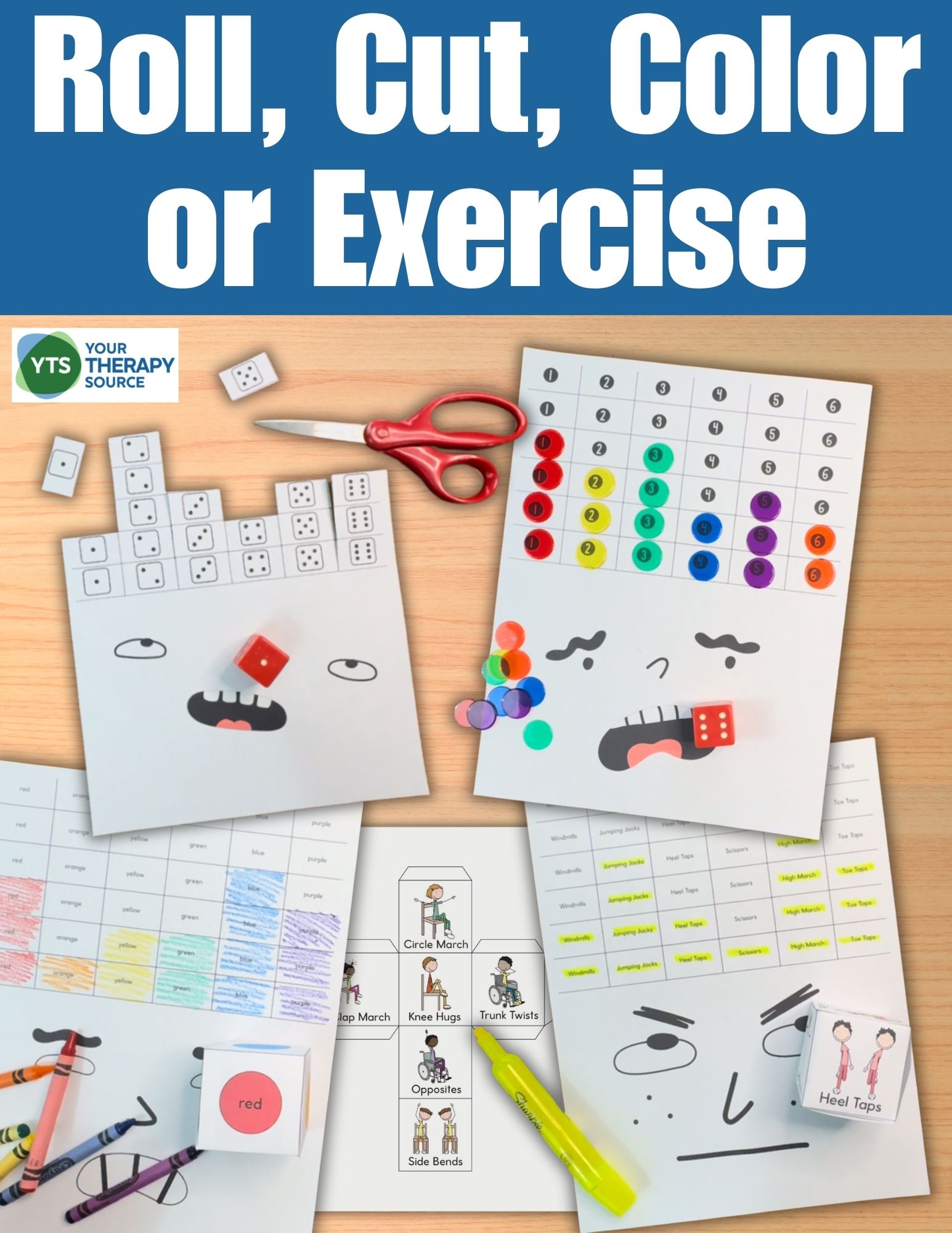
Roll Cut Color and Exercise
How to Use the Free Printable Cutting Activities
Using the free printable cutting activities packet is simple and straightforward. Here’s how you can get the most out of this resource:
- Print the Pages: Since the designs are in black and white, you can easily print them on standard white paper. The economical design ensures that you can print multiple copies without concern.
- Provide the Right Tools: Make sure children have a good pair of child-safe scissors. Depending on their skill level, you may also want to offer glue sticks for use with cut-and-paste worksheets.
- Start with the Basics: Begin with the straight lines practice sheets before progressing to more complex shapes and patterns. This gradual approach helps build confidence and competence.
- Encourage Independent Work: As children become more comfortable with their scissor skills, encourage them to complete the worksheets independently. This not only builds their cutting abilities but also fosters a sense of accomplishment.
- Incorporate Into Other Activities: Use the cut-out shapes in other educational activities, such as sensory bins or art projects. This adds a layer of creativity and reinforces the skills learned during cutting practice.
These free printable pages are also perfect for home use, allowing parents to support their child’s development in a fun and engaging way.
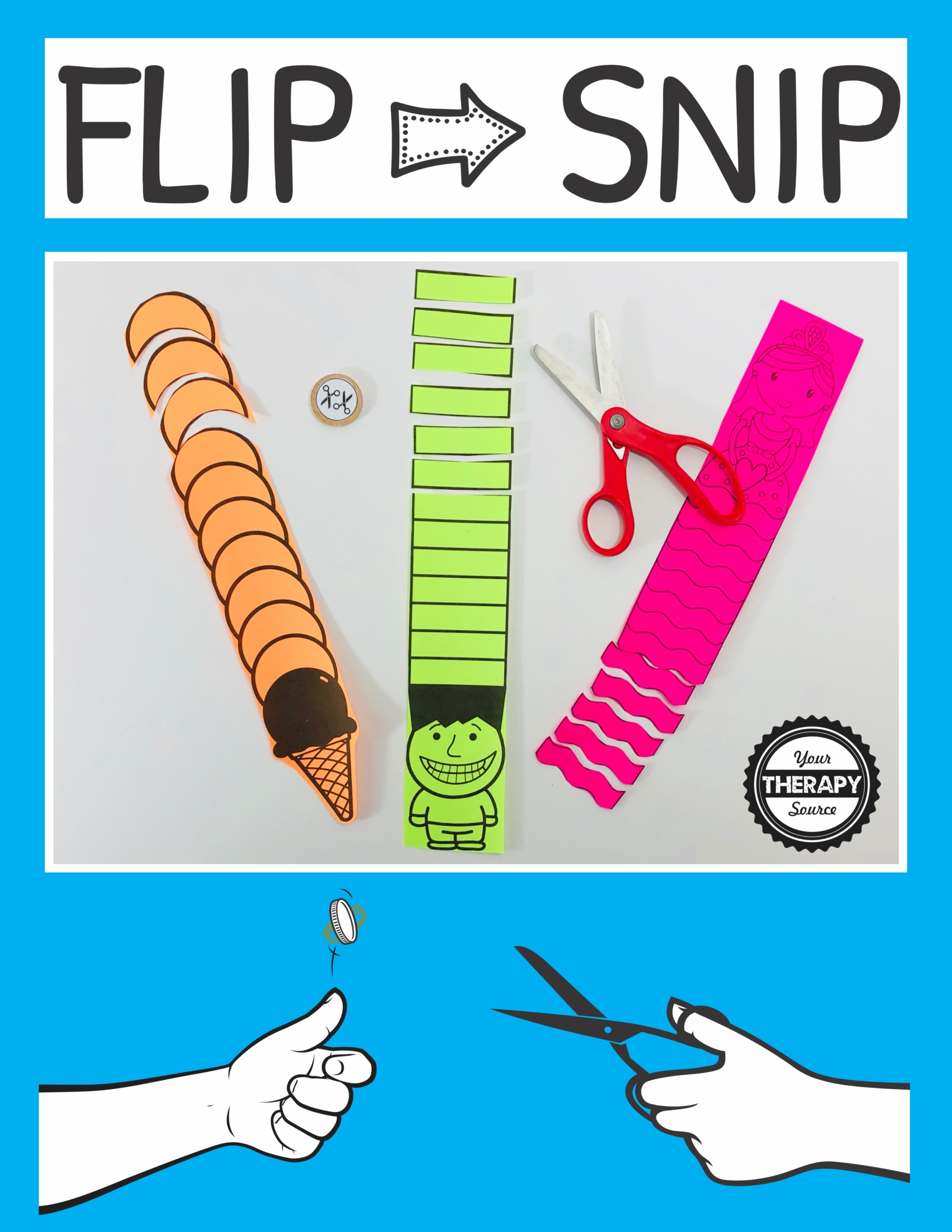
Flip and Snip Scissor Practice Game
More Resources for Cutting Practice
If you’re looking for more ways to support cutting skill development, here are additional resources that you might find useful:
- Free Cutting Worksheets for Fine Motor Skills
- Cutting Activities for Kids
- Cutting Practice Printable
- Scissor Skills
- Cut and Paste Worksheets
- How to Teach a Child to Cut with Scissors
- Prepare Children for Scissor Use
These resources offer a variety of free printable worksheets and hands-on activities that focus on developing scissors skills. From beginners to more advanced learners, there’s something here for every child.
Download Your Free Printable Cutting Activities Today
Scissor skills are an important part of a child’s development, and with the right resources, learning can be both fun and effective. The free printable cutting activities packet provides a great way to give young learners the practice they need, with a range of exercises that cater to different skill levels. Whether you’re a teacher, occupational therapist, or parent, this free resource is a valuable addition to your toolkit.
Get the free download today and start helping children develop this essential skill in a fun, engaging way. With consistent practice, your young students will gain confidence in their abilities, making cutting activities a positive and rewarding experience.
